Exercises and recovery following neck dissection surgery
Information for patients from Physiotherapy
This leaflet has been produced with grateful acknowledgement to the University of Oxford and the National Institute for Health and Care Research (NIHR).
You have had an operation on your neck. The operation may have involved your mouth, jaw, or face as well. This leaflet explains:
what a neck dissection is
why physiotherapy is needed
what exercises you should be doing; and
how to continue with your normal daily activities following surgery.
The leaflet is only a guide. Your physiotherapist and healthcare team will provide more detailed information as you need or want it.
We hope this leaflet helps to answer some of the questions you may have. If you have any further questions or concerns, please speak to the physiotherapist on the ward.
What is a neck dissection?
A neck dissection is an operation to remove lymph nodes on one or both sides of your neck. This may also involve the nerves and muscles in that area. An incision (cut) made on your neck allows the surgeon to access your lymph nodes.
Neck dissection is a common procedure for patients undergoing treatment for head and neck cancers. Tissues removed will be sent to the laboratory for testing, to see if the cancer has spread.
To perform the neck dissection your surgeon will need to make a cut that will leave a scar. The exact shape and position of that scar will depend on:
your surgeon
which lymph nodes are being removed; and
any scars / skin creases you may already have.
You will discuss this with your surgeon before your surgery.
Why is physiotherapy needed?
After your surgery, it is important to start gentle exercises for your neck and shoulders to prevent stiffness. Stiffness can develop as your wound heals and scar tissue starts to form. If your neck becomes tight as a result of scar tissue, it can lead to discomfort and difficulty completing your everyday tasks. Regularly moving your neck and shoulders will also help to reduce swelling.
The accessory nerve is important for shoulder function. This nerve may need to be removed if it is close to the cancer tissue. Even if it is not removed, it can sometimes become bruised during the operation. If this nerve is removed or damaged, you will find that your shoulder is a little stiff and some movements may be difficult. If the nerve is intact, your shoulder movement should improve with physiotherapy and time.
After surgery, patients may find it difficult to move their head, neck, or shoulders during everyday tasks. For this reason, physiotherapy and exercise are important parts of your recovery. They will help to reduce swelling and prevent stiffness in your neck and shoulders, which may lead to pain.
What exercises should I be doing?
A. Posture
-1738319900.jpg)
After your operation
Try to sit and stand upright, with your head up and shoulders and upper back pulled back and down.
Try not to ‘slump’ or round your shoulders.
When sitting, for the first week or two, it may help to put a pillow under your forearm and elbow. This will help support your arm and avoid strain on your neck or shoulder.
To see if your shoulders are level, it can be helpful to use a mirror or ask someone to look for you.
B. Neck exercises
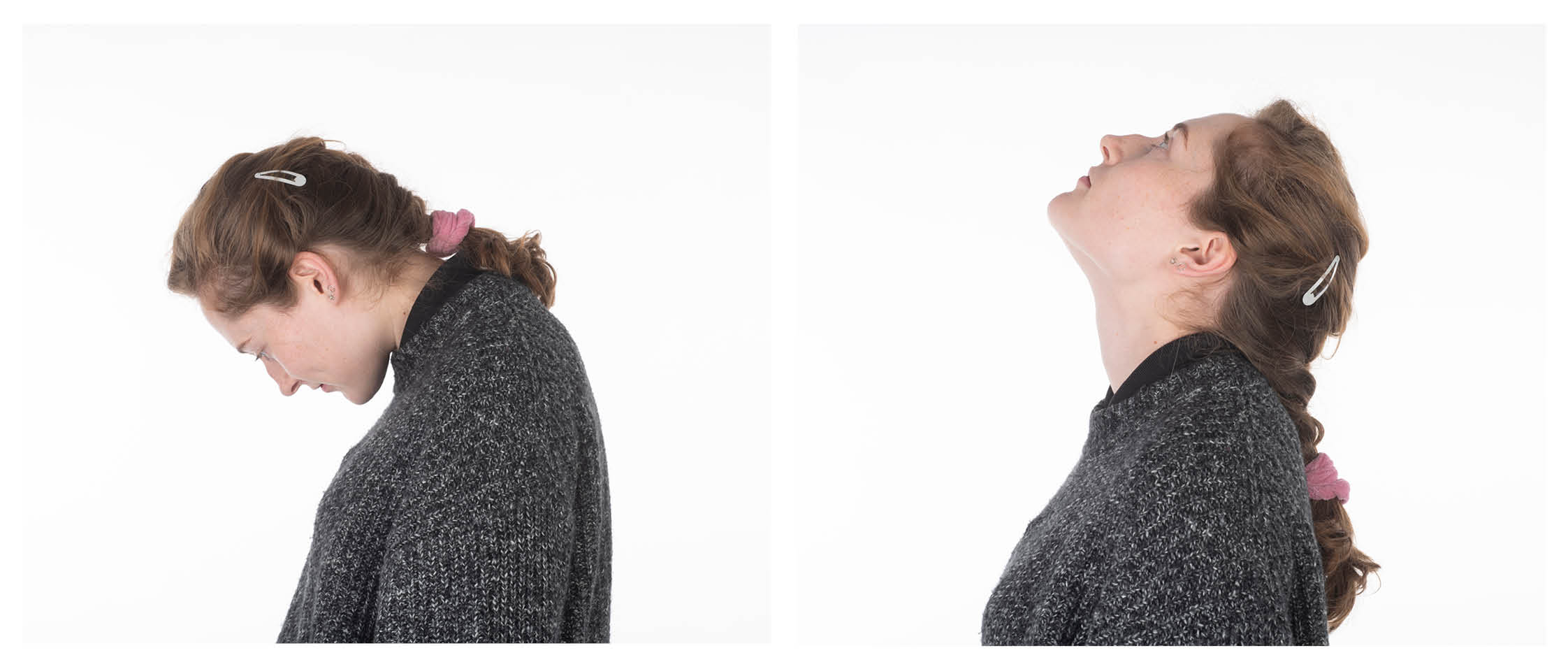
Flexion-extension exercise
Tilt your head down towards your chest. Hold for 5 seconds, until you feel a gentle stretch at the back of your neck.
Return your head to the centre.
Now look up towards the ceiling until you feel a gentle stretch. Hold this position.
Try to keep your lips closed throughout this exercise.
Repeat 5 times in each direction.
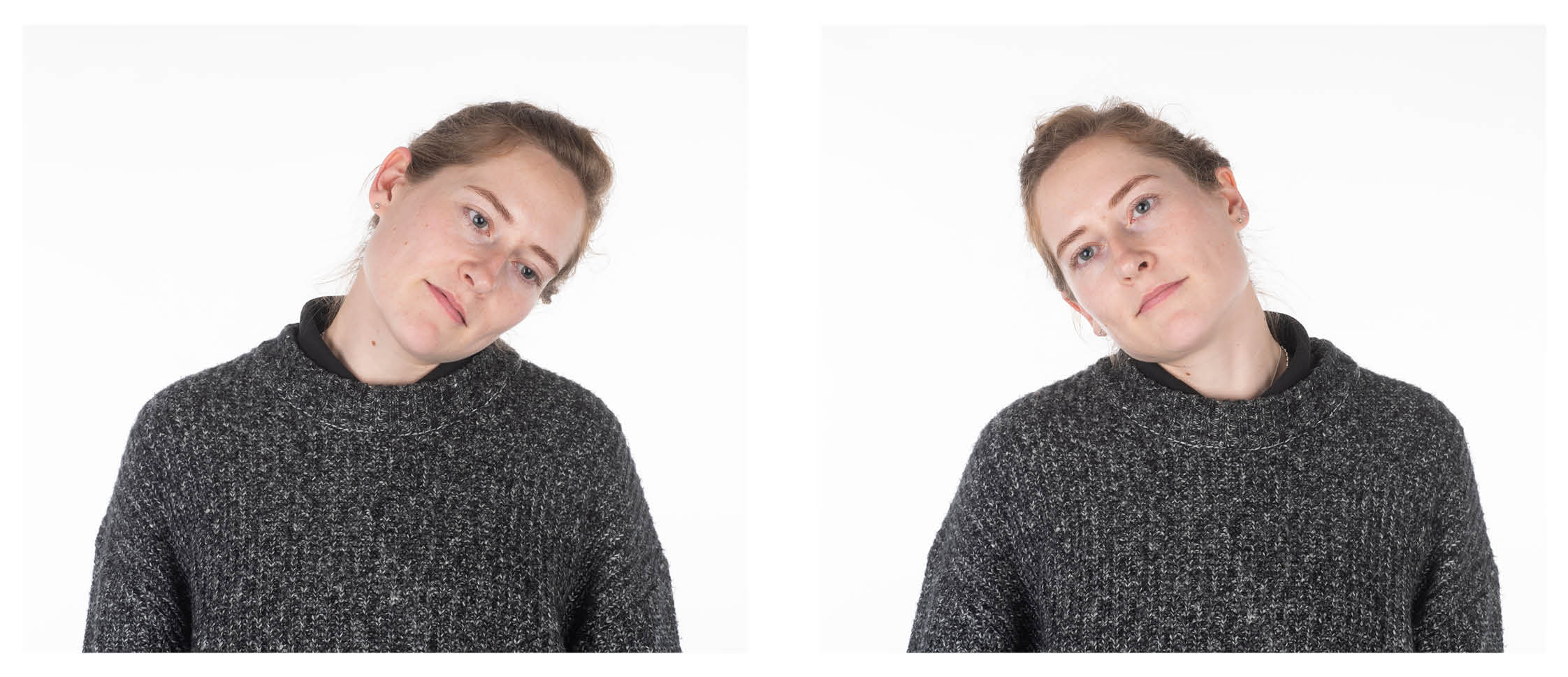
Side-flexion exercise
Bend your head to the side. Try to bring your ear as close to your shoulder as you can. Keep your shoulders relaxed.
Hold this position for 5 seconds, and then return your head to the centre.
Repeat on both sides, 5 times each direction.

Rotation exercise
Turn your head towards one side, as though looking over your shoulder. Keep your chin at the same height and move within comfortable limits.
Return your head to the centre.
Repeat on the opposite side.
Repeat 5 times on each side.
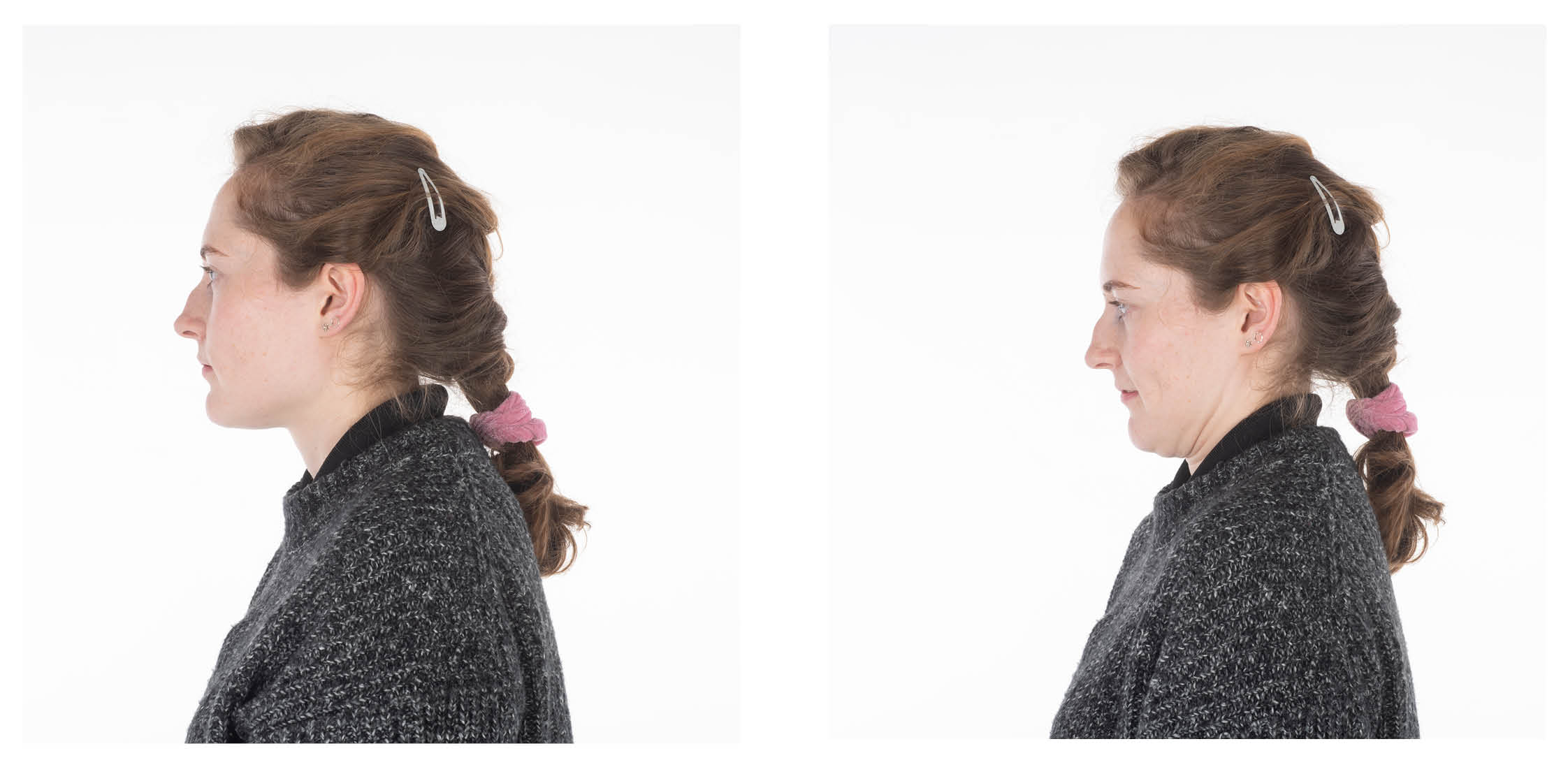
Deep neck flexor exercise
Keep your head level and pull your chin in. This is just a small movement, so do not try to pull your chin too far back.
Hold for 5 seconds.
Return to the starting position.
Repeat 5 times.
C. Shoulder exercises
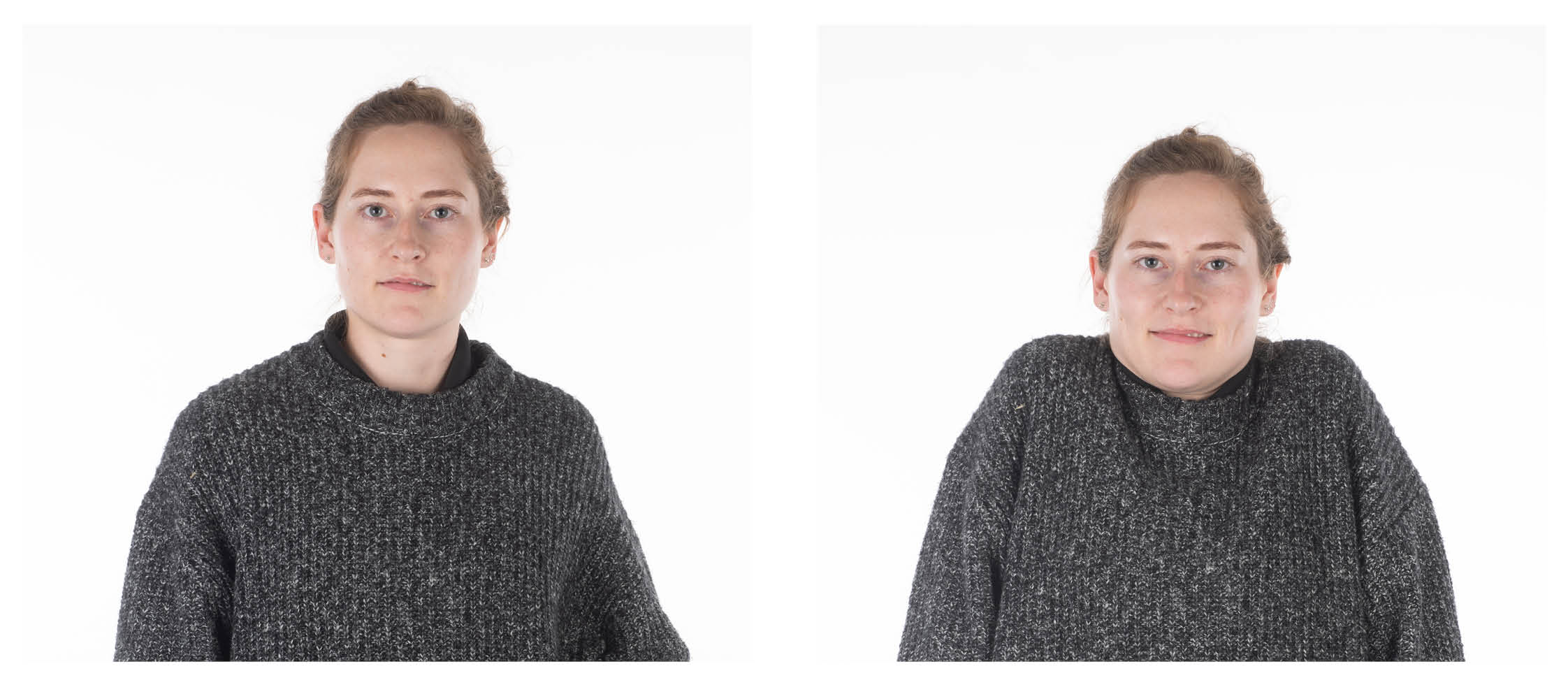
Shoulder shrug / roll
Lift your shoulders up towards your ears, as though shrugging your shoulders.
Hold for 5 seconds and gently lower as far as you can, then relax.
As you feel more confident with this exercise; lift your shoulders upwards, gently roll them backwards as though opening up your chest.
Repeat each exercise 5 times.
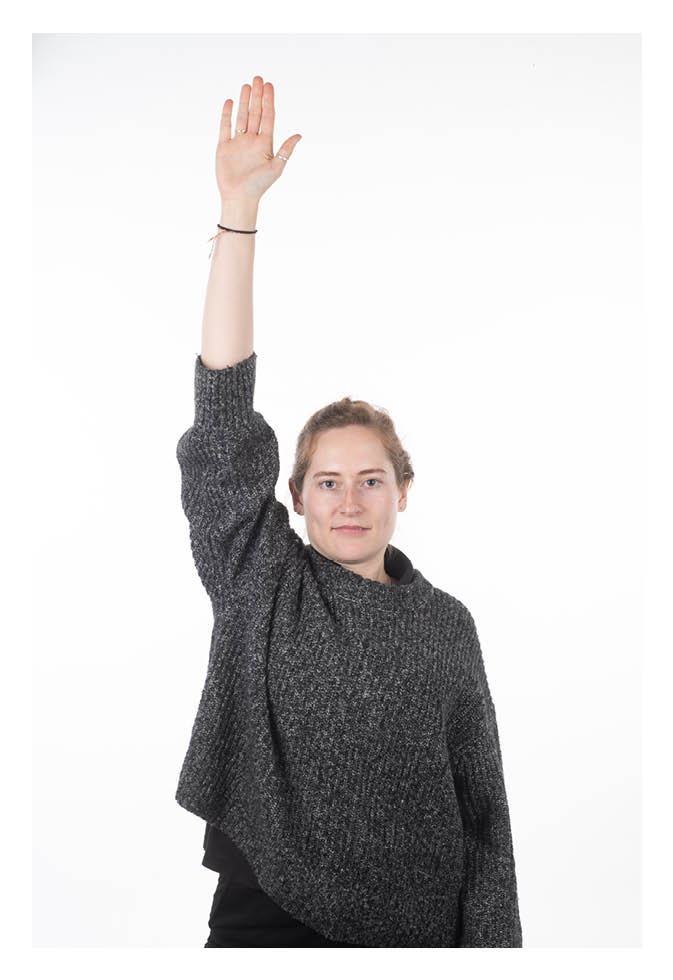
Shoulder flexion-abduction exercise
Lift your arms up one at a time; let your thumb lead the way. Only go as far as is comfortable, gradually increasing the movement with time.
Try this exercise lying down on the bed or use your other arm to gently help, if:
you cannot lift your arm against gravity; or
you find yourself hitching your shoulders or using other trick movements.
It can be useful to watch yourself in a mirror, to spot trick movements.
Repeat 5 times on each arm.
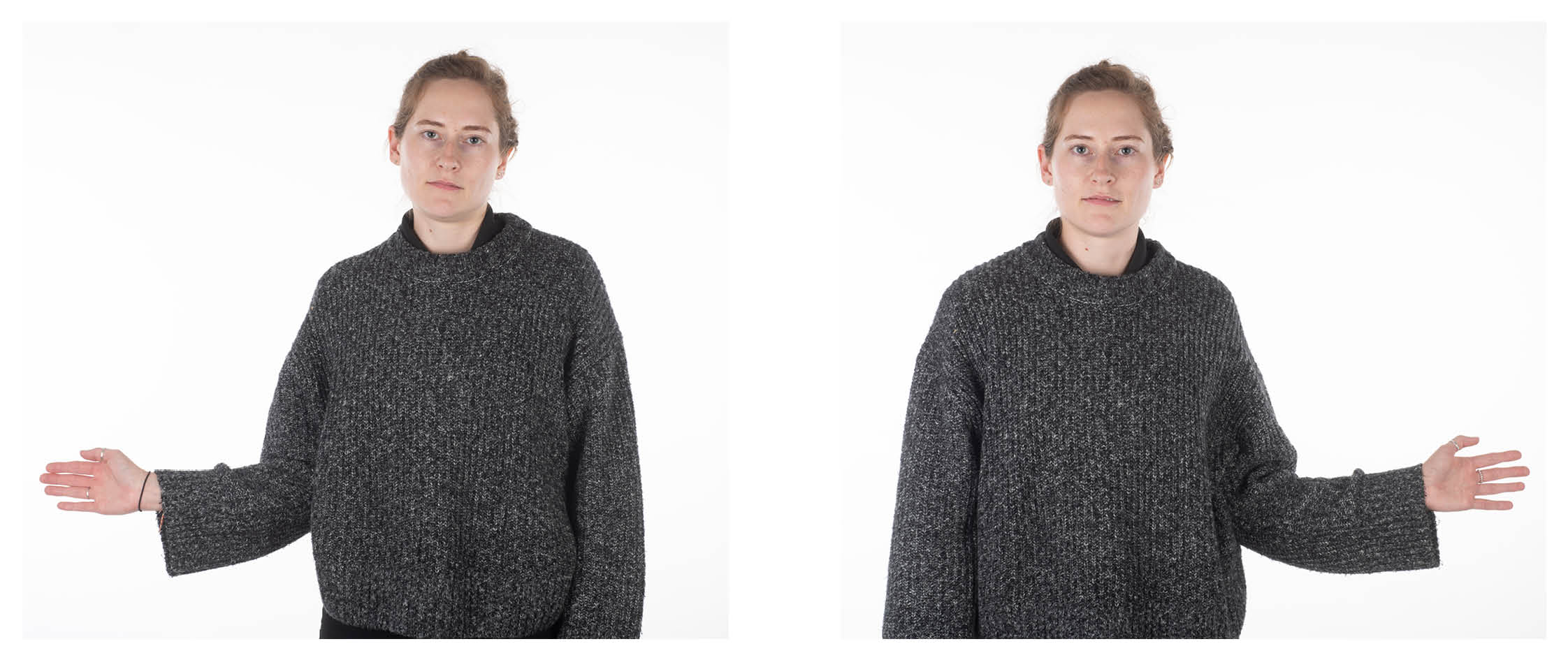
Shoulder rotation exercise
Bend your elbows, keeping them tucked into your sides.
Gently move your forearms outwards and back again.
Repeat 5 times.
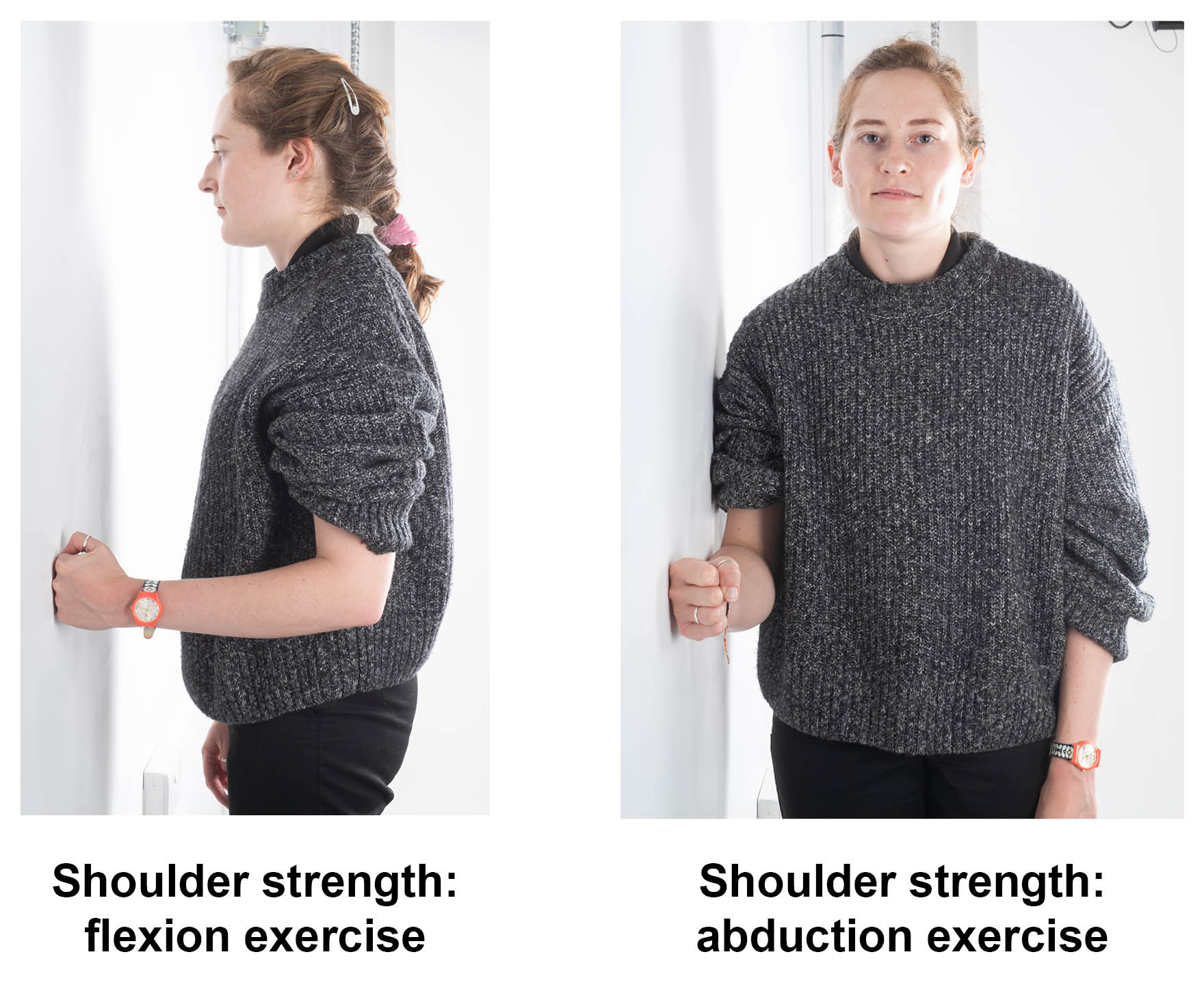
Shoulder strength: flexion exercise
Face a wall.
Keep your arm close to your side and elbow bent to 90°.
Push your fist into the wall, but do not let your arm move.
Hold for 5 seconds.
Repeat 5 times each side.
Shoulder strength: abduction exercise
Stand with your forearm against a wall.
Keep your arm close to your side and elbow bent to 90°.
Push your forearm into the wall, as if you were pushing it sideways. Do not let your arm move.
Hold for 5 seconds.
Repeat 5 times each side.
You may want to pad your hand / forearm with a cushion between you and the wall.
How much exercise should I do?
It is best to do ‘little and often’, rather than lots of exercises at one time.
Aim to exercise 3 to 4 times a day, for 5 to 10 minutes each time. Your physiotherapist will be able to advise you.
Even if you have regained full movement and strength, continue with your exercises for up to 3 months. Longer if you have any ongoing problems.
Radiotherapy may make your neck and shoulders more stiff and tight. If you are having radiotherapy, you must continue to exercise throughout treatment and for several months afterwards. The exercises will help:
prevent stiffness
reduce the risk of shoulder and neck pain, and further problems developing.
When can I return to my normal activities?
Try to get back to normal activities gradually and with care.
Try to keep as active as you can, for example go for regular walks. This can help maintain a level of fitness to see you through your treatment.
If you feel tired, try doing 'little and often', rather than a lot in one go.
It is important to listen to your body.
In general, you may resume many of your hobbies shortly after your surgery.
You can start to do some light domestic chores as soon as you go home. Try to build-up to longer / heavier tasks gradually.
For the first 6 weeks after your operation, try to avoid heavy activities. These include hanging-out wet washing, and lifting anything heavier that a full kettle, for example shopping bags or children.
Do not swim until your wound is fully healed.
When can I return to work?
Depending on your job, you should be able to return to work 4 to 6 weeks after your operation. Your consultant or GP will be able to advise you.
If needed, your GP or the hospital will be able to provide you with a sickness certificate.
When can I drive again?
You should not drive until you are confident that you can drive safely. In general, you should not drive until you are back to your normal daily activities.
Check with your insurance provider before driving again.
When you return to driving, try it out in a quiet area with family / friends first, before going out in traffic.
Main things to consider:
What are the effects of any painkillers you may be taking? For example, do they make you feel drowsy / sleepy?
Can you turn your head to look in blind spots without pain or stiffness?
Can you comfortably hold your arms on the steering wheel for the necessary length of time?
If you had a flap taken from a part of your leg, can you comfortably hop on that leg? This will show whether you can operate the brake or clutch to do an emergency stop.
What else can I do to help the healing?
Good nutrition is important in helping your wound to heal. This includes eating healthily and getting enough calories. This will help you get back to your normal activities. Please follow the advice from your hospital dietitian, and any swallowing advice from your speech and language therapist.
Not smoking will help your wound to heal. It can also help to avoid many other problems, such as any cancer returning.
If you need support to stop smoking, please contact One You Kent on 0300 123 1220, or email.
Contact information
If you have any questions regarding your recovery and physiotherapy care, please contact the head and neck inpatient physiotherapists.
This leaflet has been produced with grateful acknowledgement to University of Oxford and the National Institute for Health and Care Research (NIHR).
What do you think of this leaflet?
We welcome feedback, whether positive or negative, as it helps us to improve our care and services.
If you would like to give us feedback about this leaflet, please fill in our short online survey. Either scan the QR code below, or use the web link. We do not record your personal information, unless you provide contact details and would like to talk to us some more.
If you would rather talk to someone instead of filling in a survey, please call the Patient Voice Team.
Patient Voice Team
Telephone: 01227 868605
Email